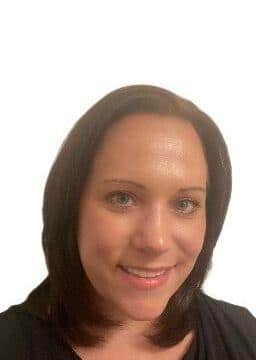Although codeine and hydrocodone are distinct opioids, they share many similarities, including a risk of dependence and addiction.
Many prescription opioids exist; two of the most common are codeine and hydrocodone. If you or a loved one take codeine or hydrocodone, knowing the similarities and differences between the medications, including their addiction risks, is important.
What Is Codeine?
Codeine is a naturally occurring opioid much weaker than morphine: a 10 mg dose of codeine is equivalent to about 1.5 mg of morphine. Because codeine is comparatively weak, it is typically prescribed for cough but may also be prescribed for pain that is severe enough to require an opioid.
Codeine is generally sold combined with other agents to treat cough and pain, although it may be sold on its own to treat pain.
When prescribed for coughing, codeine is generally mixed with chlorpheniramine, guaifenesin or promethazine. In contrast, when prescribed for pain, codeine can be prescribed on its own or in combination with acetaminophen. Codeine is no longer generally sold as a brand name drug, but the combination of codeine and guaifenesin is sometimes still called by its previous brand name Cheratussin AC.
Treatment Can Be Life Changing
Whether you are struggling with addiction, mental health or both, our expert team is here to guide you every step of the way. Don’t wait— reach out today to take the first step toward taking control of your life.
What Is Hydrocodone?
Hydrocodone is a partially synthetic opioid that is approximately equal to the strength of morphine. It is often prescribed combined with acetaminophen to treat severe pain but may sometimes be prescribed on its own. Hydrocodone is rarely prescribed as a combination drug with analgesics besides acetaminophen but may occasionally be seen with other drugs like ibuprofen.
When sold independently, hydrocodone is available as a long-acting drug under the brand name Hysingla ER. When sold combined with acetaminophen, hydrocodone is sometimes sold under the brand name Lortab. Previous brand names for hydrocodone-acetaminophen include Norco, Lorcet and Vicodin.
Similarities Between Codeine & Hydrocodone
Codeine and hydrocodone have several similarities, including:
- They are both controlled substances
- They are both opioids
- They can both be prescribed for pain
- They both carry an FDA boxed warning for overdose risk and should be avoided with other depressants like benzodiazepines.
- They are both broken down by the kidneys
- They have similar side effects like constipation, sedation and nausea
Differences Between Codeine & Hydrocodone
Despite their similarities, codeine and hydrocodone have many differences, such as:
- While hydrocodone is a Schedule II controlled substance, meaning it has a high risk of abuse, addiction and dependence, codeine has a variable controlled substance status depending on its strength and other ingredients and can range from Schedule II to Schedule V.
- Codeine is a naturally occurring opioid; hydrocodone is partially synthetic.
- Codeine is comparatively weaker than hydrocodone, and as a result, it is generally not prescribed for severe pain but for cough.
- Codeine converts into morphine when it enters the brain, while hydrocodone breaks down into norhydrocodone and hydromorphone.
Signs of Prescription Painkiller Abuse
When someone starts to misuse prescription painkillers, signs often show up. The person or their loved ones may notice changes in behavior, especially related to painkiller use. As the misuse progresses into addiction, these symptoms may increase, as does the risk of overdose.
Signs of Codeine Abuse
When a person starts to misuse codeine, signs may include:
- Mixing the codeine product with other substances, including soda, to get high
- Exaggerating symptoms to try to get codeine or a stronger opioid
- Going to different doctors and pharmacies to try to get codeine prescriptions
- Asking the pharmacy to fill codeine prescriptions before they are due
- Claiming to have lost or accidentally destroyed their codeine supply to try to get more
- Taking codeine that has not been prescribed to them
- Showing excessive side effects of codeine use, like sedation, constipation and itching
Signs of Hydrocodone Abuse
Signs of hydrocodone misuse are very similar to those of other opioids, including codeine, and can include:
- Doctor shopping to try to get hydrocodone prescriptions
- Visiting different pharmacies to try to get hydrocodone prescriptions
- Requesting early prescription fills of hydrocodone
- Exaggerating pain symptoms to try to get more hydrocodone or a stronger opioid
- Asking the pharmacy to fill a hydrocodone prescription before it is due
- Claiming that the previous hydrocodone supply was lost or destroyed to try to get more of the drug
- Using hydrocodone that has been prescribed for someone else
- Displaying excessive side effects of hydrocodone use, like sedation, constipation and itching
Treatment Options for Prescription Painkiller Addiction
When someone is addicted to prescription opioids, it is important to have a recovery plan. Quitting the prescription painkiller cold turkey is often ineffective and can lead to withdrawal symptoms and subsequent relapse. Instead, a stepwise approach to overcoming addiction can be more helpful:
- Medical detox: In medical detox, you have 24/7 support in an inpatient setting where you are slowly weaned off the painkiller. Medication-assisted treatment (MAT) may be prescribed as medically appropriate.
- Rehab: Following medical detox to get you off the drug, rehab can help keep you off the painkiller. Rehab options differ in intensity, with many patients first selecting intensive rehab options and tapering down to less intensive options as they recover. Rehab includes intensive inpatient, inpatient residential, partial hospitalization, intensive outpatient and outpatient options.
Get Help for Opioid Addiction at Orlando Recovery Center
If you or a loved one struggle with prescription painkillers, Orlando Recovery Center is here to help. At Orlando Recovery Center, we are here every step of your recovery journey, supporting your medical detox, rehab and well-being. We offer amenities, including volleyball, yoga, basketball, swimming and art activities. Don’t wait — contact a Recovery Advocate today to see how we can help.










